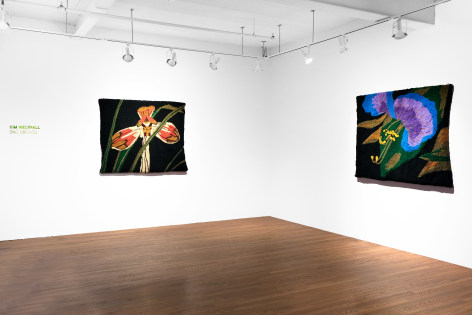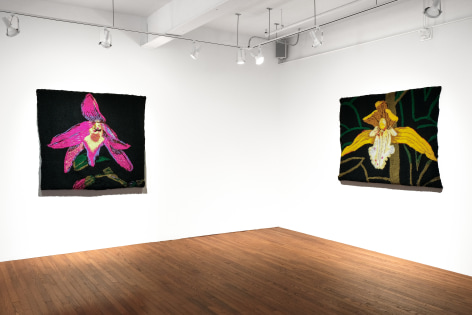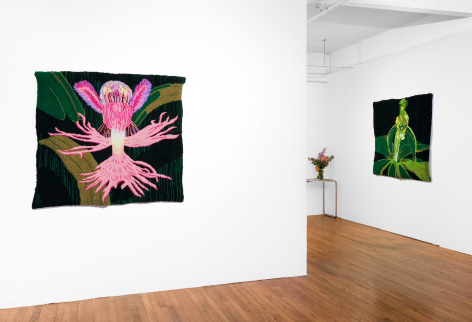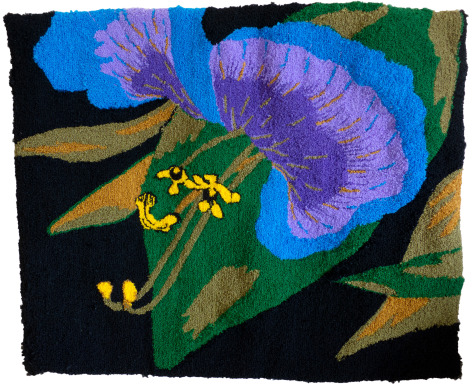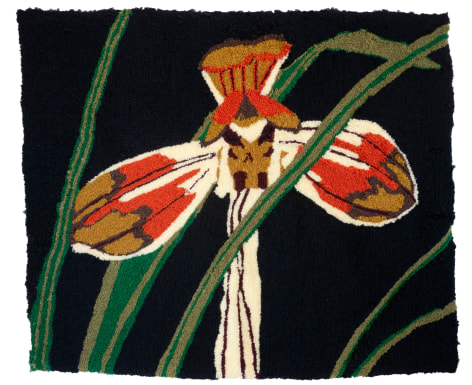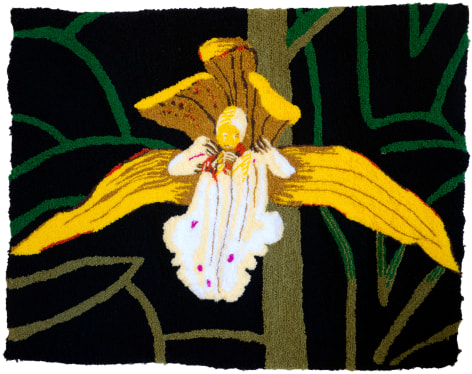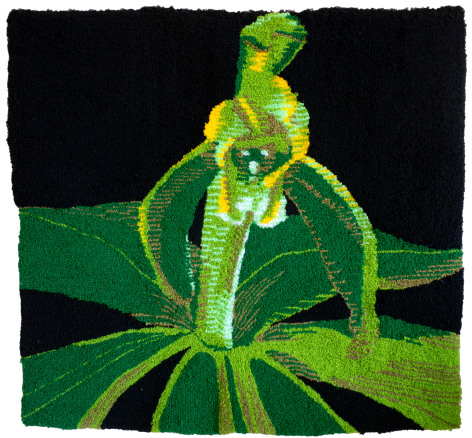Kim Westfall
DMZ Orchids
August 5 - 28
Gaa Gallery Provincetown
Gaa Gallery is pleased to present DMZ Orchids, a solo exhibition of tufted ribbon tapestries by Brooklyn-based artist Kim Westfall. In DMZ Orchids, Westfall examines the plant life found in the Korean Demilitarized Zone. On view through August 28, this will be Westfall’s first exhibition with the gallery.
“Once I cleared the Civilian Control line and military checkpoints, I entered the DMZ, and finally felt a sense of calm that has always evaded me in the country. It wasn’t just the wild beaches flanked by barbed wire and thriving plant life, it was also because it was the farthest I could get away from South Korea.
The DMZ is heavenly, despite what politicians say.”
After decades of fortification, the Korean Demilitarized Zone is now a largely untouched nature preserve where over 5,000 species of animals and plants flourish. While the surrounding area is sparsely populated and economically depressed, the flora and fauna in the DMZ are thriving. Orchids are among the many plants growing in this biosphere.
The orchids that grow in the DMZ have personality, but their expressions are unknowable. They grow freely in a restricted space where few people have permission to enter. Their world exists apart from human affairs and persists regardless of past and future deterritorializations.
In the Spring of 2022, Westfall traveled to the northernmost point of the DMZ via Goseong county in Gangwon province in the Republic of Korea. Before the war, this land was a single county called Koseong, located in what is now the Democratic People’s Republic of Korea. The division after the war resulted in two counties and two provinces with the same names. Koseong county in Kangwon province in the northern DPRK, and Goseong county in Gangwon province in the southern ROK. In Korean, they are spelled exactly the same.
This imposed redundancy is relatable for Westfall. Her work asks nuanced questions about national and racial identities, and how they are often streamlined and manipulated. Previously Westfall’s work has examined narratives surrounding the US-Korean linked adoption industry, and she continues to search for oblique angles into the uneasy relationship and history surrounding the US-Korea alliance.
In DMZ Orchids, Westfall continues this investigation by focusing on orchids in the accidental ecosphere of the heavily armed DMZ border.
The orchids in Westfall’s tufted ribbon works recall studio floral photography’s black backdrop. These ribbon textiles are generated from digital drawings projected onto a backing cloth. Using materials common to craft and goods for the home, or adorning the body, the resultant works are both mechanized and handmade. Featuring a single flower per image, the works in DMZ Orchids present as a film still, a photograph, a moment captured in time. Faces begin to emerge in the centers of flowers. The body of the plant becomes recognizable, embodying a new language. Nearly cartoon-like, there is a simultaneous humor and bleakness to the images. They are filled with juxtapositions: soft and heavy, still and animate, delicate and opaque, resilient and precarious. These works represent narrative absences and suggest histories and futures not yet told; the quiet and insistent messages of orchids.
Kim Westfall (b. 1986 Seoul, Korea) received her BFA from the Rhode Island School of Design in 2008. Previous exhibitions include Splendid Bitch, White Columns, New York, NY; Chibi USA, No Place Gallery, Columbus, OH; Me, My Friends, & I, 1969 Gallery, New York, NY; and Stop the World I Want to Get Off, Big Medium, Austin, TX, among others. Westfall’s work has been exhibited in group exhibitions at NADA Miami, Miami, FL; Independent Art Fair, New York, NY; 1969 Gallery, New York, NY; Untitled Art Fair, New York, NY; Sensei Gallery, New York, NY; Helmuth Projects, San Diego, CA; Cathouse FUNeral, Brooklyn, NY; and Quaid Gallery, Tampa, FL. In 2018 Westfall was a recipient of a Korean Government Scholarship; and in 2017 she received a travel and study grant from the Jerome Foundation to research the history of international adoption in Korea. Westfall continues to travel and conduct research in Korea and currently lives and works in Brooklyn, NY.

